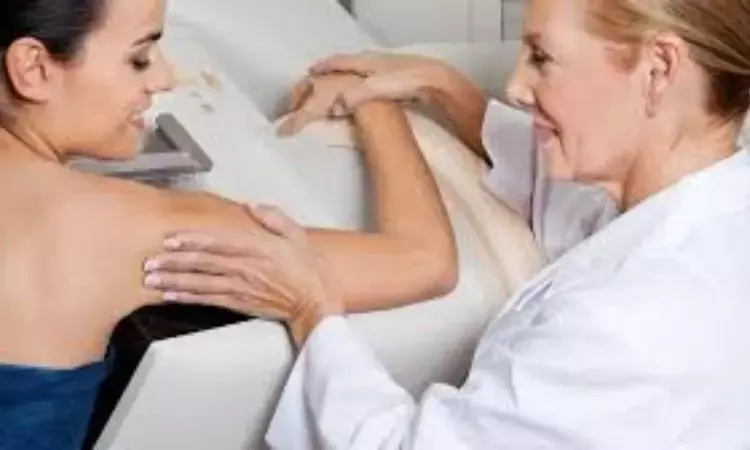- Home
- Medical news & Guidelines
- Anesthesiology
- Cardiology and CTVS
- Critical Care
- Dentistry
- Dermatology
- Diabetes and Endocrinology
- ENT
- Gastroenterology
- Medicine
- Nephrology
- Neurology
- Obstretics-Gynaecology
- Oncology
- Ophthalmology
- Orthopaedics
- Pediatrics-Neonatology
- Psychiatry
- Pulmonology
- Radiology
- Surgery
- Urology
- Laboratory Medicine
- Diet
- Nursing
- Paramedical
- Physiotherapy
- Health news
- Fact Check
- Bone Health Fact Check
- Brain Health Fact Check
- Cancer Related Fact Check
- Child Care Fact Check
- Dental and oral health fact check
- Diabetes and metabolic health fact check
- Diet and Nutrition Fact Check
- Eye and ENT Care Fact Check
- Fitness fact check
- Gut health fact check
- Heart health fact check
- Kidney health fact check
- Medical education fact check
- Men's health fact check
- Respiratory fact check
- Skin and hair care fact check
- Vaccine and Immunization fact check
- Women's health fact check
- AYUSH
- State News
- Andaman and Nicobar Islands
- Andhra Pradesh
- Arunachal Pradesh
- Assam
- Bihar
- Chandigarh
- Chattisgarh
- Dadra and Nagar Haveli
- Daman and Diu
- Delhi
- Goa
- Gujarat
- Haryana
- Himachal Pradesh
- Jammu & Kashmir
- Jharkhand
- Karnataka
- Kerala
- Ladakh
- Lakshadweep
- Madhya Pradesh
- Maharashtra
- Manipur
- Meghalaya
- Mizoram
- Nagaland
- Odisha
- Puducherry
- Punjab
- Rajasthan
- Sikkim
- Tamil Nadu
- Telangana
- Tripura
- Uttar Pradesh
- Uttrakhand
- West Bengal
- Medical Education
- Industry
Self-compression mammography gives same image quality as standard compression: Study

Italy: Mammograms performed with self-compression compared to radiographer-led compression of breasts helped to achieve stronger breast compression with comparable image quality, says a recent study published in European Radiology. Also, the proportion of women who attended follow-up mammography eas also found to be similar in the two groups.
Appropriate compression is said to be essential in mammography in order to obtain high image quality and reduce dose. compression however can cause pain and discomfort. It has been proposed that self-compression reaches better compression and possibly increase participation in mammography.
Against the above background, Paolo Giorgi Rossi, Azienda Unità Sanitaria Locale – IRCCS di Reggio Emilia, via Amendola Reggio Emilia, Italy, and colleagues conducted the study with the objective to test the efficacy of self- compared to radiographer-led compression to reduce the average glandular dose without affecting image quality and compliance to follow-up mammography.
For this purpose, the researchers included women presenting for mammography for breast cancer follow-up, symptoms, opportunistic screening, or familial risk. They were randomized to self-compression or radiographer-led compression. Two independent radiologists and two radiographers blindly assessed image quality. Measurement of pain and discomfort was done immediately after mammography and their recall was asked when the women participated in the follow-up mammogram, 1 or 2 years later.
Based on the study, the researchers reported the following findings:
- In total, 495 women (mean age 57 years +/-14) were enrolled, 245 in the self-compression and 250 radiographer-compression arms.
- Image quality was similar in the two arms.
- A stronger compression force was reached in the self- than in the radiographer-arm (114.5 vs. 10.25 daN), with a 1.7-mm reduction in thickness, and almost no impact on dose per exam (1.90 vs. 1.93 mGy).
- Moderate/severe discomfort was reported by 7.8% vs 9.6% and median pain score was 4.0 in both arms.
- Median execution time was 1 min longer with self-compression (10.0 vs. 9.1 min).
- No effect on subsequent mammography was detectable.
To conclude, self-compression reached stronger compression of the breast, with comparable image quality but with no glandular dose reduction or impact on participation in follow-up mammography."
Reference:
Iotti, V., Giorgi Rossi, P., Canovi, L. et al. Patient-centred care with self-compression mammography in clinical practice: a randomized trial compared to standard compression. Eur Radiol (2022). https://doi.org/10.1007/s00330-022-09002-z
Dr Kamal Kant Kohli-MBBS, DTCD- a chest specialist with more than 30 years of practice and a flair for writing clinical articles, Dr Kamal Kant Kohli joined Medical Dialogues as a Chief Editor of Medical News. Besides writing articles, as an editor, he proofreads and verifies all the medical content published on Medical Dialogues including those coming from journals, studies,medical conferences,guidelines etc. Email: drkohli@medicaldialogues.in. Contact no. 011-43720751


